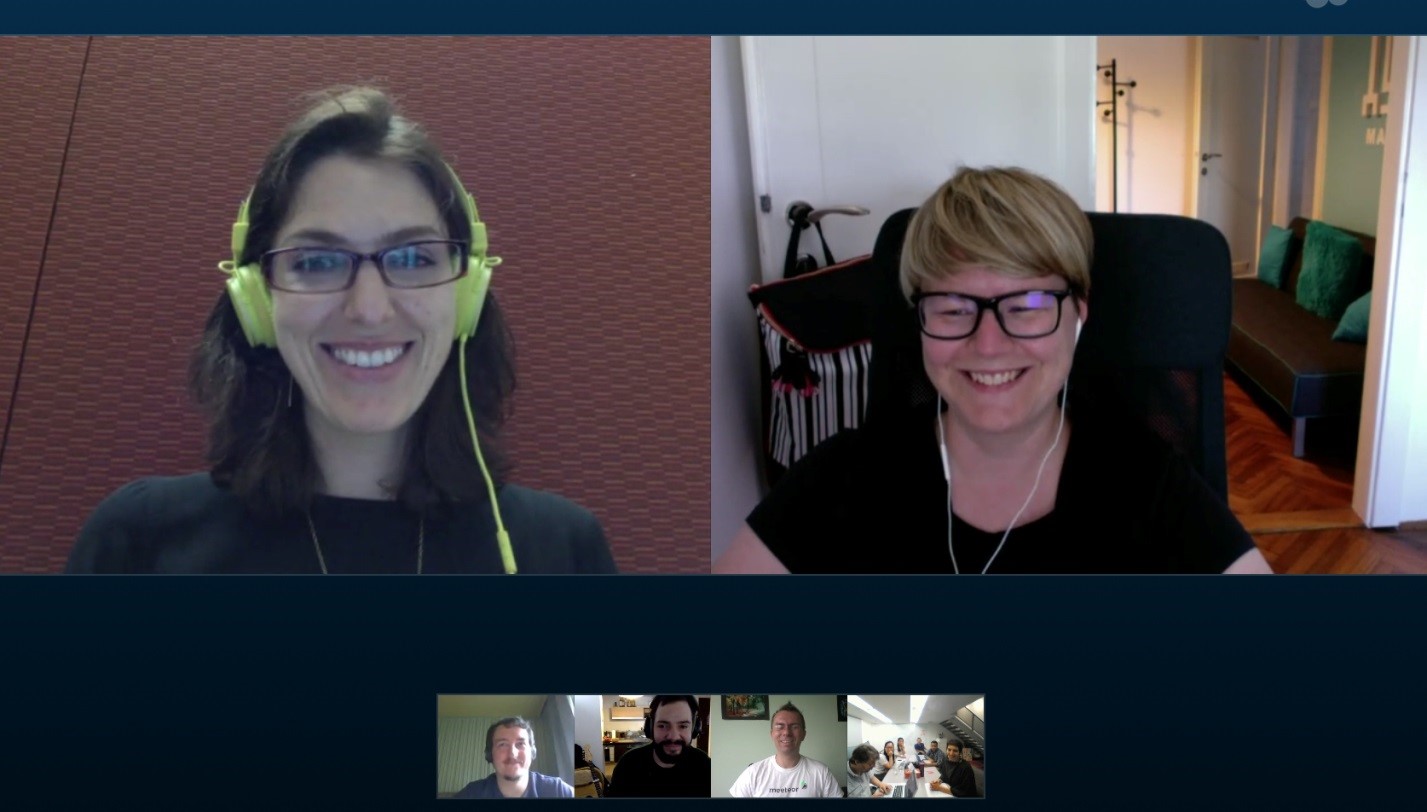
At Meeteor, we’ve created a software that facilitates the creation of a thoughtful meeting agenda, capturing clear meeting notes, and managing effective follow-through. Our coaching and skill-building services provide training and change management support to transform the meeting culture of a team or organization.
As CEO, it’s my job to ensure our team is conducting effective virtual meetings and building strong relationships. Here are five lessons I’ve learned managing virtual meetings for team members across multiple countries, languages, and backgrounds.
1. Spend the first few minutes catching up.
At Meeteor, we have a bi-weekly team alignment meeting in which we share progress toward monthly milestones, align on cross-workstream efforts, and discuss company-wide topics. The first few minutes of each meeting are purely social. People talk about their hobbies, weekend adventures, and family lives.
This check-in time allows us to develop and maintain bonds that make working together from afar more enjoyable and manageable. We rely on these bonds to help us overcome cultural differences and communication barriers. It’s no surprise that with multiple team members for whom English is their second (or third) language, we sometimes encounter communication challenges in our daily work. Healthy relationships full of trust and caring allow us to face these communication differences with curiosity and a light heart.
2. Video and audio quality matters (and so does how you use it).
We opt for video meetings whenever possible. Seeing people’s expressions and their smiling faces gives us body language information that increases understanding and connection. When compromised internet speeds make the video or audio quality choppy, we stop screen sharing and ask individuals to open the presentation materials that we’ve already provided as pre-work on their own screens. We’ve experimented with a variety of video conferencing softwares in order to find the one that works best for our team. We also invested in a wide-angle camera and a good microphone for our conference room, so that all team members can see and hear each other.
3. Empower everyone to participate.
Our team meetings often consist of a small group gathered in one room and other team members participating virtually. It can be easy for the co-located group to start chatting with each other without including the virtual participants, so we make it a practice to intentionally check in with virtual team members throughout the meeting. Sometimes this means asking virtual participants to speak first when the discussion moves to a new topic or to share final thoughts as we wrap up a subject.
At Meeteor we practice our core value of “Respect” in every interaction – respect for self and for others. Team members know they can speak up at any time during meetings to ask others to share their thoughts. This helps the meeting leader to ensure balanced participation.
4. Use a chat app to complement your meetings.
With team members located across four different time zones, it’s not always convenient to hop on a quick call as we only have a few overlapping work hours each day. Using an online chat app with mobile capabilities like Slack or HipChat enables team members to communicate without being at their desks. While I don’t promote working off hours, there are times when input or information is needed in order to move work forward. An after hours phone call is a clear disruption at the dinner table, but a quick message typed on your phone is less so.
Chat apps support team member communications and relationships between meetings. Team members communicate frequently on work topics but also share personal and fun information, like co-located team members would do over lunch or in the coffee room. This reinforces healthy team relationships.
5. Make your meetings meaningful.
If meetings aren’t engaging and productive, participants will quickly begin multitasking whether it’s a virtual or face-to-face meeting. We always provide an agenda ahead of time so participants know what we’re going to accomplish in the meeting. Sometimes we use shared Google documents for brainstorming so everyone can contribute in real time.
Part of making meetings engaging is ensuring the right people attend. We only include the people who need to be in the meeting because they have information important to share or would gain value by participating. Team members who don’t need to be in a meeting but who would benefit from knowing meeting outcomes are kept in the loop with a meeting summary. We use the Meeteor app to record, share and store meeting notes that provide context, detailed next steps, and decisions.
Virtual meetings are here to stay.
The number of geographically disbursed teams is only growing. Whether your team is scattered in 2 locations or 20, you can use these five learnings to build a healthy and productive team – wherever your colleagues reside.

Mamie Kanfer Stewart is CEO and founder of Meeteor, a software and consulting firm that enables better meetings. Mamie is driven to help others optimize their time and cultivate their team to achieve results. She has been featured in Inc., Forbes, Business Collective, and PC Magazine. She was a keynote speaker at Lean Startup Week 2016. Follow her on LinkedIn.
AIM Strategies®
AIM® is a results-driven Human Capital Consulting firm specializing in Global Leadership Development, Co-located and Virtual Team Facilitation, Cross Cultural Communications, and Change Management Services. To request information about AIM’s experiential packages (5D’s™ Consulting Methodology and ACT™ Virtual Coaching Process), email: info@aim-strategies.com and follow AIM® on LinkedIn.



